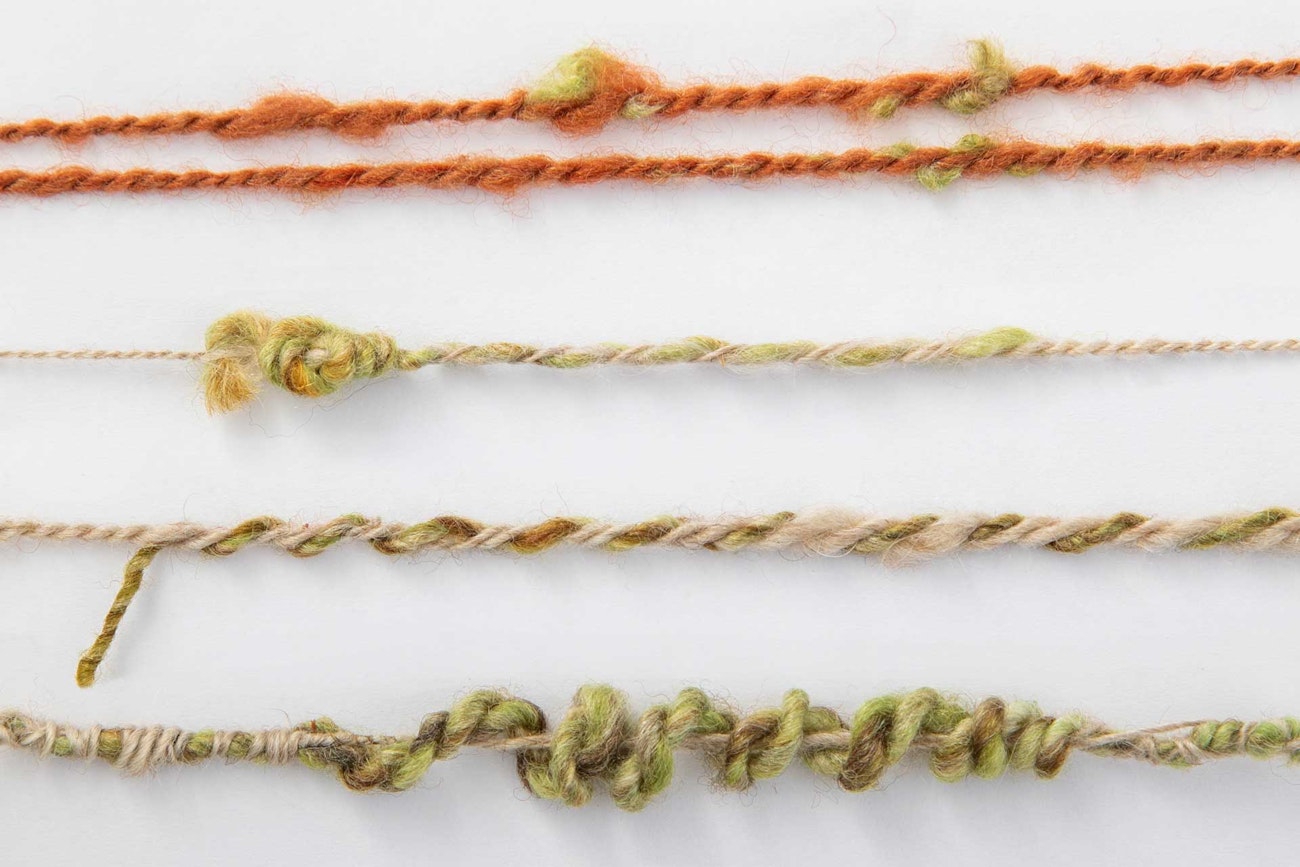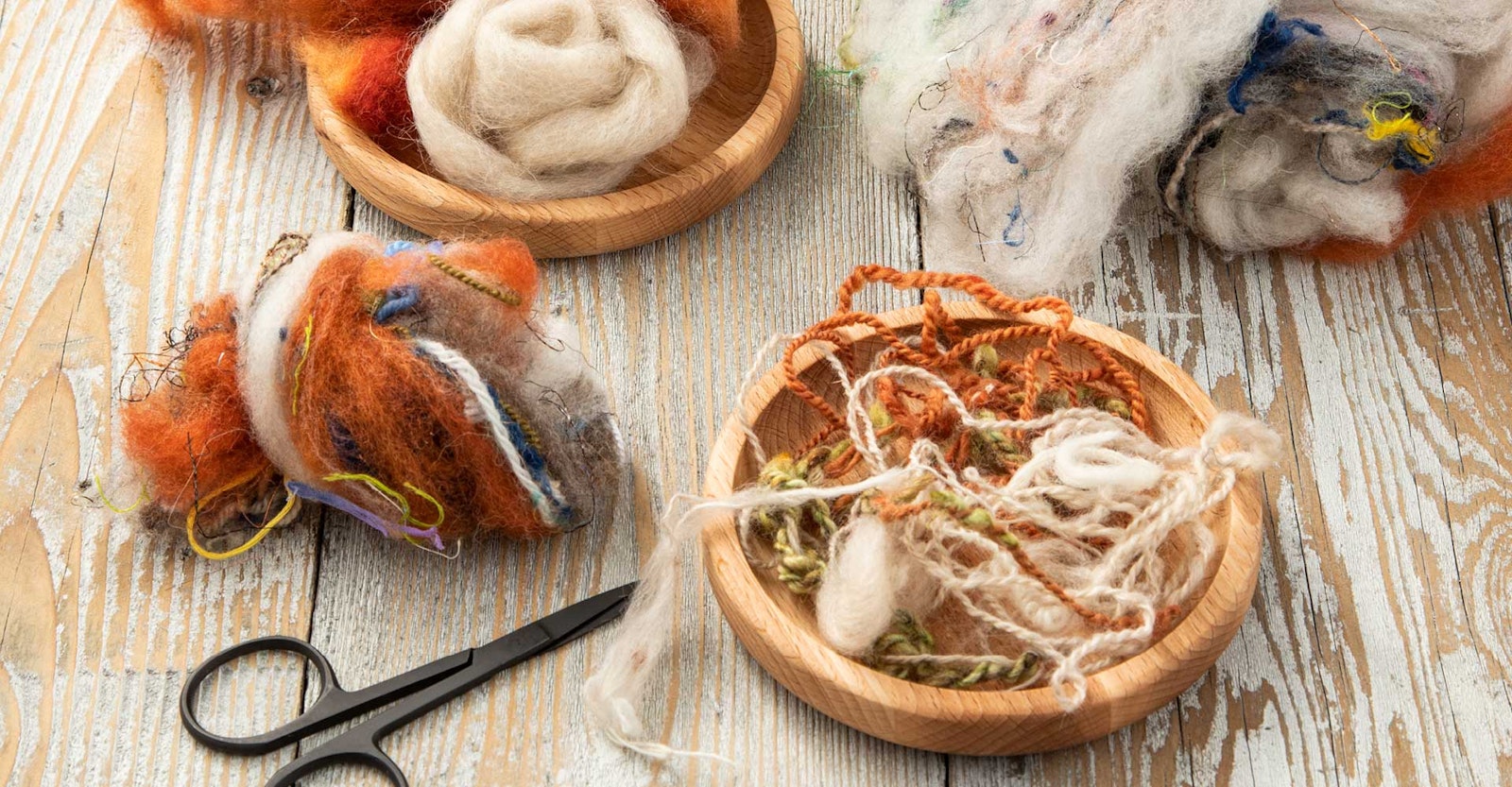As a spinner, I see each of my handspun skeins as distinct, infused with memories. They are tangible diary entries, marking times, places, and spaces of creation and living. When I reflect on a particular yarn and the time we spent together, the memories that are linked to it might range from the technical to the emotional. Where I purchased the fiber and how I prepared it for spinning might be entangled with where I was in my life, both physically and mentally, while spinning the fiber.
The time taken to see a fiber through to fabric can often be a lengthy process, and in general, I spend one to two years per project from start to finish. So when I have scraps that are left behind—even wispy bits—it can be bittersweet to throw those memories away. Instead, I like to salvage them and give them new life. Sometimes, I will use the scrappy bits in my SAORI weaving practice, which is a lovely way to meditate on the origins of the yarns and the stories they bring to a new piece. But other times, I will take the scraps and incorporate them into a batt, creating a lovely tweed effect.

Alanna uses an Inox mohair brush to rough up the surface of some yarns, making them easier to incorporate into blends. Photo by Alanna Wilcox
New Preps, Old Yarns
Depending upon the type of fibers your handspun scraps contain, you could experiment with different ways of incorporating them into a new spin. Lengths of yarn that are very short and slippery, silk for example, might not be the best inclusions to use in a low-twist yarn, as they might wiggle their way out of the yarn when handled. I find that using wool that has lots of crimp and springiness is preferable as a fiber base. These wools act a bit like Velcro, keeping the additions more securely in place.
Alternatively, the yarn scraps could be scuffed up a bit to make them fuzzier, giving them some tooth to grip other fibers in the blend. It depends on what kind of yarn you’re interested in creating. The more you card, flick, or rough up the scraps, the less likely they will retain their “original” look. This could certainly be an interesting design element to pursue.

From top: inclusions cut into short pieces, abraded, and carded before spinning; inclusions incorporated into one singles before plying; inclusion added as an additional ply for a short length; and inclusion plied and secured with a singles during plying.
If there is a fiber that is on the delicate side, I might try to lay the yarn scrap on the larger drum of my carder while it’s rotating instead of feeding it in through the infeed tray, or I’ll simply hold it alongside either the singles or a ply, depending on the design element I’m going for. If I do put an inclusion in through the infeed tray, I will often sandwich it between two thin layers of wool to help it bind to the already carded fibers and not fall out of the tines of the carder when swept inward.
When prepping fiber, I make sure the inclusions go in on the final pass of carding. If you card handspun yarns with multiple passes, they may get lost in the core or central part of your franken-yarn. If the scraps are long enough, however, you can choose to include them during the plying phase so that they can be wrapped on the outer edge of the yarns instead of being hidden and trapped by the outer fiber like a core yarn. These can often make for a fun novelty yarn to experiment with.
For plying, you can take the yarn scraps and tuck them between two or more plies (almost like holding the scrap yarn as an adjacent third ply) so that they’re sandwiched nicely between the two singles.

Alanna’s beautiful, scrappy yarn experiments that include long and short inclusions and various blending methods.
There Are No Creativity Police!
If you want to combine certain scraps from one project with another, then, by all means, experiment. Worst-case scenario, the “failed” yarn can become an immediate memory and, in turn, become a scrap inclusion for your next attempt!
This article was first published in Spin Off Winter 2023.
Also, remember that if you are an active subscriber to Spin Off magazine, you have unlimited access to previous issues, including Winter 2023. See our help center for the step-by-step process on how to access them.
Alanna Wilcox is a Master Spinner and color specialist who helps spinners, dyers, and fiber-art enthusiasts achieve their creative goals through her expert instruction via books and online workshops. She is an artist and an educator who can help you overcome creative challenges, learn new skills, and feel empowered to boldly go on your own creative adventures. You can see all of her offerings on her website at alannawilcox.com.

